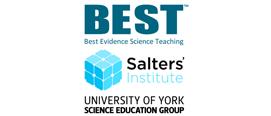- View more resources from this publisher
 Best Evidence Science Teaching
Best Evidence Science Teaching
Cells - Living, Dead and Never Been Alive
These diagnostic questions and response activities (contained in the zip file) support students in being able to:
-
Explain what is meant by movement, growth, nutrition, excretion, respiration, reproduction and sensitivity (the characteristic processes of living organisms).
-
Explain that a living organism may not show all of the characteristic processes of life in an obvious way, or all of the time.
-
Justify the classification of examples as living, dead or never been alive, using the characteristic processes of living organisms.
-
Decide whether examples of things that are living, dead and have never been alive are likely to be made of cells.
-
Recall what all animals and plants need to stay alive.
-
Explain why animals and plants need particular things to stay alive, by linking them to the characteristic processes of life.
-
Link the requirements of living organisms to the characteristic processes of life and to the idea that organisms are made up of cells.
The resources include details of common misconceptions and a summary of the research upon which the resources are based.
Download the zip file for all the questions and activities.
More resources like this can be found on the BEST webpage: Best Evidence in Science Teaching
Show health and safety information
Please be aware that resources have been published on the website in the form that they were originally supplied. This means that procedures reflect general practice and standards applicable at the time resources were produced and cannot be assumed to be acceptable today. Website users are fully responsible for ensuring that any activity, including practical work, which they carry out is in accordance with current regulations related to health and safety and that an appropriate risk assessment has been carried out.
Downloads
-
Resources 9.56 MB
-
Teacher notes 662.34 KB




